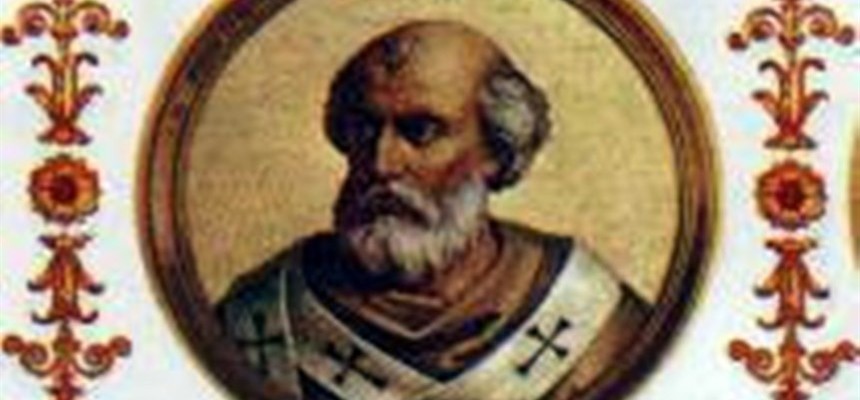
Born around 780, Eugenius was a native of Rome. He may possibly have been the son of one Boemund, but later research has dropped that from official records. Eugenius was raised into the Church and by 816 he was the archpriest of St. Sabina on the Aventine and a cardinal. He is known to have been a man who took his assignment seriously. And, later, as pope, he spent much renewing that church’s interior with mosaics and metalwork that had his name etched into it.
During the reign of his predecessor, Pascal fought for control of the Church by wresting it from the nobles. These nobles were exiled to France and their lands confiscated. In June of 824, at the death of Pope Pascal, a second candidate, Zinzinnus, was proposed by the plebian faction. Despite the decree of 769 issued by Pope Stephen IV that nobles were not to participate in a papal election, Eugenius was backed by nobles, as well as by Abbot Walla, previous councilor to Emperor Louis and his father, Charlemagne.
It appeared that the presence of King Lothair, son of the Holy Roman Emperor Louis, was needed to maintain the authority of the pope. Lothair took no time taking advantage of this opportunity. He chose to redress the abuses he saw in the papal administration.
The nobles who had been expelled during Pascal’s reign were recalled to Rome and their properties were returned. They also got a vested interest in the elections. Lothair confirmed a statute that no pope could be consecrated until the election had been approved by a Frankish emperor.
Soon after the consecration, Eastern Emperor Michael II took up the iconoclastic argument with Eugenius. He sent envoys with letters of intent showing tolerance towards those who honored images. The image-activist, Theodore the Studite, wrote happily about the perceived unity of Churches with “Old Rome”. Michael soon changed his mind, began to persecute the image-honoring citizens and tried to secure the cooperation of Louis. Louis sent envoys to the pope assuring him that, given some time, the French bishops would gather and give serious study to the iconoclastic phenomenon. The education and understanding of these bishops were so bad that the final papers sent to Eugenius were a combination of confusion and ill-digested lore. Nothing was achieved or done.
Possibly due to his disappointment in the French bishops’ report, Eugenius established a council in Rome in 826. Sixty-two bishops attended. It was obvious that Eugenius was concerned with the poor education of priests and bishops. Towards this end, 38 disciplinary decrees were issued. They called for a restoration of church disciplines. They developed a foundation for schools for each parish. Ignorant priests or bishops were to be suspended and reeducated before returning to clerical life. Masters were to be attached to episcopal palaces or cathedral churches, there to instruct. Priests were forbidden to wear secular clothes or have secular occupations. Simony (the purchase of clerical offices) was forbidden. Various provisions were established for the care of the poor, widows and orphans in the diocese. Henceforth, Eugenius was known as the “father of the people”.
On the international scene, Eugenius encouraged the work of St. Ansgar, the Apostle of the Scandinavians. Coins of the pope with his name and Emperor Louis’s name have been found.
Pope Eugenius lived until 27 August 827, ruling just over three years. No documents exist about his burial, but it is assumed he was interred at St. Peter’s.
Horace Mann, after much research, described Pope Eugenius as simple and humble, learned and eloquent, handsome and generous, a lover of peace, and wholly occupied with the thought of doing what was pleasing to God.

Recent Comments